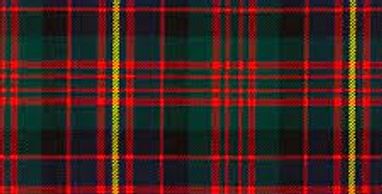Clan Cameron History
THE CLAN
The Scottish clan of yesteryear was a collection of individuals with a given surname (often related by blood) living somewhat in close proximity to one another, united under a common chief. Others have defined clans as "those of common stock." In many instances septs (sometimes described as "broken men" from other clans who sought the protection of another chief) were also considered part of any given clan.
The Clan Cameron has a recorded history from the fifteenth century, although unsubstantiated histories have its roots reaching back to the supposed first chief, Angus Cameron, living about the year 1000. They resided in the "Cameron Country" of Lochaber, an area roughly 12 by 16 miles near the present day town of Fort William, in Scotland's West Highlands. The history of the Camerons, as a Scottish clan, is an extensive and often combative one, for that was how men learned to survive and live another day.
CHIEF
In each clan there were several "subaltern" tribes (in Clan Cameron's instance these would be the Camerons of Letterfinlay, Glen Nevis, Callart/Lundavra, Erracht and Clunes). Each tribe "owned" their dependence to their own immediate chieftain, but all agreed in owing allegiance to the Supreme Chief of the Clan. In ideal circumstances they looked upon it to be their duty to support him in all his endeavors.
Clan Cameron is fortunate to have a hereditary chief, descended directly from the earliest days of Camerons living in Lochaber. Since the year 1528 the chief of Clan Cameron have been called "Lochiel." If you had a Cameron ancestor living in Scotland, odds are they followed an ancestor of the present Lochiel as their chief. The XXVIII hereditary chief of Clan Cameron, who like so many of his ancestors resides at Achnacarry is Donald Andrew Cameron of Lochiel.
SURNAME
There are two possible meaning for the surname "Cameron." Unfortunately, both are no more than theoretical explanations, with the surname's definitive meaning lost somewhere in the distant past.
1) Crooked Nose: From the Gaelic "cam," which means "crooked," "bent" or "hook" and "shron," which means "nose." Together they make up "Camshron," the more accepted/popular meaning behind the Cameron surname. The "sh" and "o" are for the most part silent when pronounced.
2) Crooked Hill: From the Gaelic "cam," once again meaning "crooked," "bent" or "hook" and "brun," meaning "hill." This name, "Cambrun," was popular in Fife, Scotland and if not categorically connected with the Camerons of the Highlands, may be the source of "Lowland" Cameron surname in some instances.
CREST
Central to the Clan Cameron crest are five arrows, "united" with one another with a gules ribbon or band. This crest goes back to before 1745, when it supplemented the old "dexter arm" crest (which was still used interchangeably with the Five Arrows into the mid-twentieth century. These two crests, and their mottos on the surrounding strap, may be used by clansmen to denote their clan affiliation.
The "Five Arrows" represent the five branches of the clan under the leadership of the Camerons of Lochiel during the early/mid-eighteenth century, namely:
1) MacMartins or Camerons of Letterfinlay
2) Camerons of Glen Nevis
3) Camerons of Callart and Lundavra
4) Camerons of Erracht
5) Camerons of Clunes
A more detailed explanation as to the origin of the "Five Arrows," written by a past Chief of Clan Cameron, may be found by "clicking" on the crest image on the main page of Clan Cameron Online or by visiting the "Five Arrows" page.
MOTTO
The present motto of the Clan Cameron is "Aonaibh Ri Chéile," which roughly translated means "Unite" or "Let Us Unite." This motto is usually used in conjunction with the more accepted "Five Arrows" crest and is also presently used on the Armorial Bearings of Cameron of Lochiel.
In the past, when the old Dexter Arm crest was in wide use, the associated motto was "Pro Rege et Patria," translated as meaning "For King and Country." The present Lochiel uses both mottos.
SONG
While many songs have been associated with the Cameron Clan throughout the years, one tune stands alone as the most recognized: Mary Maxwell Campbell's 1829 masterpiece "March of the Cameron Men."
WAR CRY
The war cry of Clan Cameron was "Chlanna nan con thigibh a' so 's gheibh sibh feòil!" which translates to "Sons of the Hounds, Come Hither and Get Flesh!"
.jpg/:/cr=t:3.99%25,l:0%25,w:100%25,h:92.02%25/rs=w:400,h:533.3333333333334,cg:true)
Clan Tartans
Cameron Modern
Cameron Ancient
Cameron Ancient

Cameron Ancient
Cameron Ancient
Cameron Ancient

Cameron Hunting
Cameron Ancient
Cameron Ancient Hunting

Cameron Ancient Hunting
Cameron Hunting Weathered
Cameron Ancient Hunting

Cameron Hunting Weathered
Cameron Hunting Weathered
Cameron Hunting Weathered

Cameron Erracht
Cameron Hunting Weathered
Cameron Hunting Weathered

Cameron Ancient Erracht
Cameron Ancient Erracht
Cameron Ancient Erracht

Cameron Lochiel
Cameron Ancient Erracht
Cameron Ancient Erracht

Cameron Lochiel Ancient
Cameron Ancient Erracht
Cameron Lochiel Ancient


This website uses cookies.
We use cookies to analyze website traffic and optimize your website experience. By accepting our use of cookies, your data will be aggregated with all other user data.
